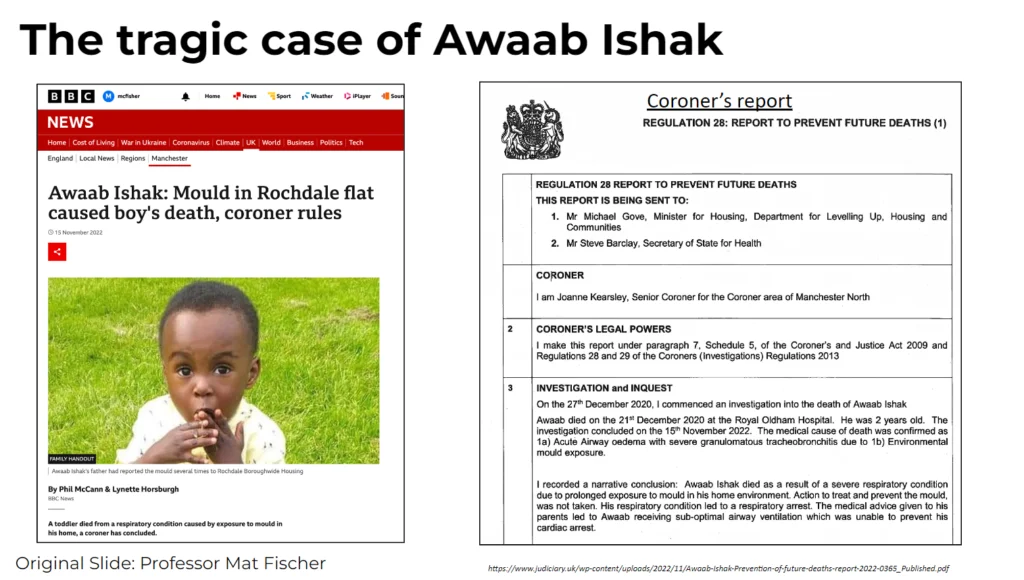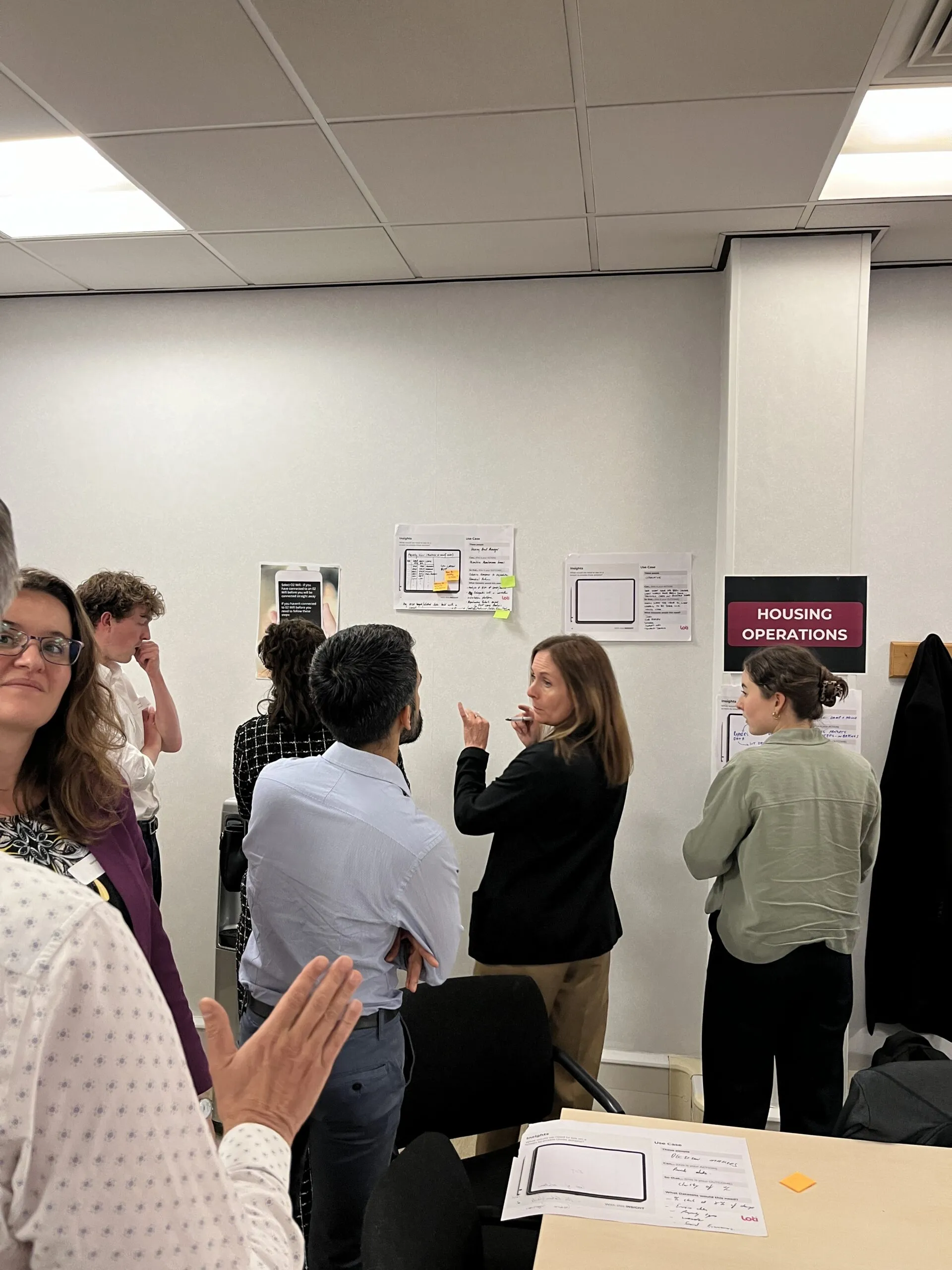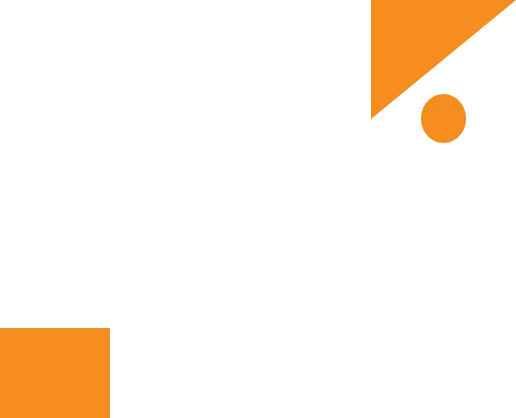Using sensors to address damp and mould in social housing
LOTI and the Greater London Authority (GLA) are collaborating to enable the rapid deployment of IoT (Internet of Things) Sensor technology that solves problems for councils and Londoners. It is part of our strategic aim to make data available across the city so that teams across London Borough councils and their partners have the insights they need to deal with some of London’s biggest challenges such as reaching Net Zero, dealing with poor air quality and improving the quality of London’s housing stock.
Although this work has a strong data and technology component, we start by identifying the outcomes that matter to London and the corresponding challenges and problems that boroughs face on the journey to reaching these outcomes. We only propose using connected sensors if the data and technical systems will help teams take real world action to fix a problem.
The Pan-London IoT Project builds on the projects and expertise generated by the SLP (South London Partnership) Innovate Programme who have previously deployed sensors across Kingston, Sutton, Merton, Richmond and Croydon for issues such as air quality, traffic, fly tipping and supporting vulnerable people in their homes. A detailed breakdown of their use cases can be found in the LOTI Smart City Case Study Library.
The key objectives of the project are to:
- Foster IoT adoption and faster implementation
- Harness the proven experience of a borough team with multiple successful deployments
- Avoid the unnecessary repetition of IoT trials
- Prevent data silos
- Demonstrate technology and data systems that enable a range of tangible outcomes
- Generate new data to make strategic decisions
- Unlock supplier investment
A focus on damp and mould
The first area of focus for the Pan-London IoT project will be damp and mould.
Following the tragic death of Awaab Ishak where the coroner determined that he died as a direct result of prolonged exposure to mould, damp and mould in homes is now being recognised for the serious health risks it poses to both physical and mental wellbeing of residents; there has been a renewed focus on understanding and acting on the causes of damp and mould in homes in line with new legal obligations that social landlords have to provide good quality and safe homes and services to tenants. Data collection and analysis is required in support of operational and strategic action to deliver on this requirement.

In the IoT Damp and Mould project we aim to use internet connected sensors to deliver the following:
- Identify root cause of damp / mould issues
- Understand scale of problem in boroughs and across London
- Give confidence that improvements and remediations are working in properties
- Capture evidence for claims / discussions
- Identify problems before they happen
- Proactively mitigate reputation damage
Phase 1
As part of funding from the Mayor of London, 200 small sensors that record temperature and humidity are being distributed to 18 boroughs. Each borough will be able to choose how and where they deploy sensors. Potential use cases include: proactive monitoring to spot issues such as ventilation system failure, reactive response to aid with diagnosis when complaints have been made, baselining in voids and many more.
Phase 1 will test our ability to distribute and deploy sensors to multiple boroughs and provide the support, resources and forums to enable successful placement of sensors, interpretation of the data and action to remediate issues.
Boroughs are already finding that the sensors are providing them with information to proactively prevent mould by identifying issues such as broken ventilation systems. Some boroughs have been able to offer advice and support in switching energy suppliers to households who are struggling to heat their homes to a level required to prevent condensation leading to damp and mould.
Phase 2
Phase 2 of the project will see a pan-London data platform created to aggregate data collected from the phase 1 participants plus any other boroughs who are collecting damp and mould data via any other sensor or technology. The platform will be designed to meet strategic outcomes for London, these include supporting answering questions for public health, retrofit and housing policy.
In May, we held a workshop with practitioners from housing, public health and retrofit alongside academics, data experts and commercial service providers to explore how damp and mould data aggregated from across the city can be used. We looked at both how damp and mould sensor data could be used and which other supporting data sets might be required. For example, it might be possible to use energy prices to predict damp and mould cases given that there may be a correlation with under-heating rates in low income households (cold properties are higher risks for damp and mould).

The outputs of the workshop will inform the initial use cases that will be built as prototypes on the data platform with the support of AWS and City Trax. We will take an iterative approach to development testing assumption and proving value as we go.
Our pan-London IoT Damp and Mould data platform will enable us to test how we bring together sensor data from a wide range of organisations using different technologies and inform our strategy for expanding the platform to meet more use cases. Through the process we will create standards and minimum requirements for both data and technology which will be designed to ensure interoperability of systems, provide clarity to boroughs and other public bodies procuring technology and certainty and consistency for suppliers.
Going beyond damp and mould
Our goal is to show that IoT sensor data can be used to solve problems for a wide range of users across the city. Reusing data to provide insights for programmes beyond the scope of the services that traditionally deal with damp and mould such as housing. For example, data aggregated at the London level could be used by public health professionals in combination with health outcomes data to help us understand if certain housing stock types are more likely to lead to poor health outcomes. This information can then be used to help prioritise which homes should be retrofitted first as part of programmes aimed at reducing carbon emissions from homes. The same sensors can be used to monitor the effectiveness of retrofit changes so that we can be sure we are investing in improvements that are truly making a difference.
This approach is aligned with the work taking place at the GLA on the forthcoming Data for London platform which will act as directory of available data and data initiatives across London, making it easy for practitioners across the city to find and join initiatives like the Pan-London IoT data platform that we are building.
We are some way off a fully integrated and holistic data system but we are on a journey to build it making sure we are always focused on ensuring we are always solving real problems for London.
Jay Saggar



